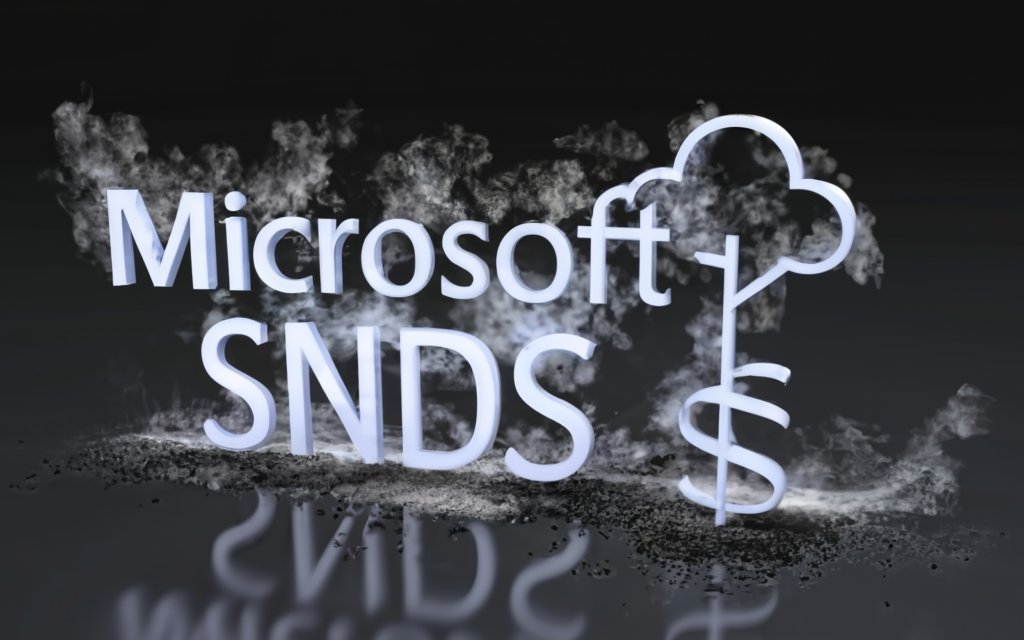Trying to decipher your email reputation at Microsoft domains like Outlook and Hotmail can feel downright impossible without the right visibility. Fortunately, Microsoft’s free Smart Network Data Services (SNDS) tool exists to shed critical light on your sender rating.
This complete guide will cover everything email marketers need to know about unlocking the invaluable deliverability intel SNDS provides. Follow along to master accessing and leveraging your SNDS metrics to guide optimizations. Let the data direct your path to improved Microsoft engagement, revenue and beyond!
For email marketers, tracking the success of campaigns sent to Microsoft domains like Outlook and Hotmail can feel like navigating through a maze blindfolded. With no clear visibility into inbox placement or user engagement, it’s tough to gauge performance or make data-driven optimizations.
Fortunately, Microsoft offers a free tool called Smart Network Data Services (SNDS) to provide high-level insights into email reputation and deliverability for these domains. Let’s break down exactly what SNDS is, who can use it, and how it can benefit your email programs.
What is Microsoft Smart Network Data Services (SNDS)?
SNDS gives email senders access to aggregated data on their IP addresses’ performance when sending to Outlook.com, Hotmail.com, MSN.com, and Live.com. It covers Microsoft’s consumer-facing email domains, but does not include business hosted Office 365 accounts.
Specifically, these are the key metrics provided:
- Email volume: The number of messages attempted from your IP addresses to Microsoft domains over a period of time.
- Spam complaints: How many emails from your IPs were marked as spam by Outlook users.
- Spam traps: The number of hits on decoy email addresses used to identify suspicious senders.
- Filter results: Microsoft’s own verdicts on your emails as spam/not spam based on content, reputation, user feedback, and other proprietary signals.
- Bounce rates: What percentage of your sent emails bounced back or failed to arrive at recipients’ inboxes.
So in summary, SNDS gives you visibility into both the quantity of mail you’re sending to Outlook/Hotmail, and quality indicators based on how Microsoft’s filters are handling that mail.
Why Should Email Marketers Use SNDS?
These unique data points make SNDS an invaluable free tool for monitoring and protecting your sender reputation. Here are some of the key benefits:
- Identify deliverability issues specific to Microsoft: See if your emails are getting flagged as spam or blocked before recipients even see them.
- Keep tabs on sender reputation health: Spam complaints and spam traps are direct signals of reputation problems. Spot issues early before impacts spread.
- Optimize campaigns targeted at Outlook users: With open and click rate data missing, SNDS metrics can help gauge Microsoft audience engagement.
- Improve list hygiene: High bounce rates in SNDS may indicate bad or outdated addresses in your lists causing harm.
- Detect potential account compromises: Unexpected spikes in Microsoft email volume could signal an account breach sending out spam.
- Benchmark and monitor progress: Establish baseline SNDS metrics and track changes over time as you optimize.
So in short, SNDS provides visibility into Microsoft reputation and deliverability that is otherwise opaque. All email marketers, especially those with significant Microsoft subscriber bases, can benefit from keeping a close eye on SNDS data trends.
What Are the Requirements to Access SNDS?
There are a few requirements email senders must meet to gain access to view their SNDS data:
- Have a dedicated IP address: You cannot view aggregate SNDS metrics for shared IP pools, since data for all senders would be blended together. You need a dedicated IP address that sends your mail traffic only.
- Create a Microsoft account: You’ll need to sign up for a free Outlook.com account to login to the SNDS portal. This is necessary for authorization purposes.
- Get ESP approval: Before SNDS will grant access, your email service provider (ESP) must first validate your request. This ensures SNDS data remains secure.
The key distinction here is having a dedicated rather than shared IP address. On shared IPs, your emails get sent alongside other customers’ of your ESP, making per-sender SNDS metrics impossible to separate out.
With dedicated IPs, your sending reputation is isolated, for better or worse. SNDS can provide data specifically on your dedicated IP’s performance and how Microsoft mail systems handle your messages.
In summary, while any email marketer can benefit from monitoring SNDS data, you need dedicated IP access to put this tool to use. Before requesting dashboard access, speak with your ESP about options for dedicated IPs and their SNDS approval process. Then create your Outlook account and submit the SNDS request.
With the proper approvals and a dedicated IP in place, SNDS can become an invaluable free addition to your email tracking and optimization toolbox. The visibility it provides into Microsoft deliverability and reputation is well worth the effort to gain access.

How to Gain Access and Interpret Your SNDS Data
Now that we’ve covered the value of Microsoft’s SNDS tool, let’s walk through how to actually gain access and make sense of the data it provides.
While the process involves a few steps, it’s straightforward to get SNDS fully configured. And once access is granted, the metrics exposed can guide impactful deliverability and reputation optimizations.
Step-by-Step Guide to Requesting Access to SNDS
Ready to get your SNDS access setup? Here are the steps:
1. Obtain dedicated IP addresses
SNDS will only work with dedicated IPs, so you’ll need one or more from your ESP. Most will charge a monthly fee for dedicated IPs above the cost of basic shared plans.
2. Create your Outlook.com account
Head to Outlook.com to signup for a free Microsoft account. Use an email address you don’t mind providing to your ESP for verification purposes.
3. Have your ESP authorize the SNDS request
Before submitting the SNDS access request, check with your ESP about which email address should be designated to approve it. For example, they may want you to select their general “abuse” inbox for security purposes.
4. Visit the SNDS Request Access page
Input the dedicated IP address(es) you want SNDS access for and select the authorization email address from step 3.
5. Wait for SNDS request approval
It may take a few business days for your ESP to review and approve the pending SNDS access request.
6. Enable automated access to the SNDS data feed
Once approved, click “View Data” in SNDS and enable automated access to generate your data feed URL.
7. Integrate the SNDS data feed
The feed URL provided can be plugged into email tracking tools to pull SNDS metrics automatically into your dashboard.
And that’s it! With your Outlook account and dedicated IPs ready, gaining access to SNDS data takes less than 15 minutes. The toughest part is the waiting period for your ESP to validate the access request.
Important SNDS Metrics and How to Analyze Them
Now let’s explore the key SNDS metrics you’ll want to closely monitor and how to analyze them to guide optimizations:
Email Volume
This shows the number of emails your dedicated IP(s) are sending to Outlook/Hotmail over time. Watch for unexpected spikes that could signal compromised accounts.
Spam Complaint Rate
Aim to keep this below 0.1% as much as possible. High complaint rates directly hurt sender reputation. Review your email content and list quality.
Spam Trap Hits
Each trap hit signals issues with list hygiene, such as bought lists with dummy accounts. Tighten opt-in processes and clean your lists.
Filter Results
Green is good here (>95% clean). Yellow means you’re borderline, while Red indicates most of your mail is blocked or spam foldered.
Bounce Rates
Bounce rates above 5% suggest potential problems with email validity and quality assurance processes. Prune bad addresses.
Analyzing these metrics together provides a comprehensive picture of your campaign health and where improvements may be needed. Trends are more telling than one-off data points, so monitor SNDS regularly to catch problems before they grow.
With access to SNDS configured, you now have an invaluable window into tracking and optimizing your Microsoft sender reputation. Take advantage by keeping close tabs on your SNDS metrics and taking action on any negative trends before impacts spread further. Your future deliverability will thank you.

Using SNDS Data to Improve Deliverability and Reputation
Armed with access to Microsoft SNDS data, let’s explore how to analyze key metrics and make optimizations to safeguard your sender reputation and boost deliverability.
SNDS shines critical light on issues specific to Outlook and Hotmail domains that could sabotage your hard-earned delivery and engagement rates. By taking the right corrective actions informed by the data, you can turn around negative trends before they spiral out of control.
Here are some of the essential ways to leverage your SNDS insights for reputation and deliverability gains.
Keeping Spam Complaints Low
Of all the SNDS data points, the spam complaint rate may be the most crucial to keep top of mind. Even a relatively small uptick in complaints can initiate a vicious cycle of deteriorating reputation and deliverability.
Outlook and Hotmail users flagging your emails as “junk” directly hurts your sender rating in Microsoft’s ecosystem. Each complaint provides a negative signal, and once your rating crosses certain thresholds, bulk sends will be automatically blocklisted or spam filtered.
Complaint rates above 0.1% in SNDS should raise alerts. Anything over 0.5% indicates you are already viewed skeptically by Microsoft filters. Here are some ways to keep complaints down:
- Review email content for red flags: Microsoft scans messages for suspicious content like misleading claims or text associated with scams/spam. Ensure your emails are professional, transparent, and designed thoughtfully for the Outlook userbase.
- Avoid subject lines that look too promotional: More complaints come from offers perceived as too good to be true (“Free Amazon Gift Card!”), compared to informative content subject lines (“New camping tips and tricks”).
- Segment inactive subscribers: Recipients who have not opened in 6+ months are more prone to spam complaints. Filter them into separate lists and re-confirm opt-in before mailing again.
- Monitor IPs sending on your behalf: Third-party services often have lower reputation, so their emails elicit more complaints. Keep tabs on IPs sending through your domain with SNDS to catch issues early.
- Disable or throttle overactive series: Blasts of repetitive campaign emails often trigger spam complaints once the frequency becomes annoying. Pace out your series more reasonably.
- Review recent email samples linked to complaints: SNDS provides sample headers for some flagged emails to learn from. Look for patterns in content, creative, subject lines, etc.
With a laser focus on keeping complaints low, you can avoid the grave impacts of landing on Microsoft blocklists. Aim for sustainably low complaint rates, and SNDS will tell you if negative perception is growing among Outlook and Hotmail users receiving your emails.
Avoiding Spam Traps
Along with user complaints in SNDS, pay close attention to any spam trap hits your emails generate. Just a few hits can signal wider issues with list quality and opt-in processes.
Spam traps are essentially decoy email addresses created by ESPs to identify and block suspicious senders who don’t properly permission and clean their lists. Even if emailing engaged subscribers, some traps inevitably end up on lists through simple errors like typos. But excess traps hint at problems.
Here are tips to avoid traps based on insights from your SNDS data:
- Review recent trap hits for patterns: Do hits cluster around specific series, segments, periods of time? Isolate common factors driving traps.
- Audit subscriber opt-in processes: Traps expose flawed or fake opt-in collection by sales teams, partners, imported lists, etc. Tighten consent.
- Install an email verification API: Real-time validation when collecting addresses identifies typos and stops bad data from entering your lists. Prevent traps.
- Clean your lists: Activate inactive or bouncing subscribers to re-confirm opt-in intent periodically. Only email those demonstrating ongoing engagement and interest.
- Develop an ongoing hygiene regimen: Set up automated rules to remove addresses with repeated hard bounces, invalid syntax, churned domains, etc. Keep lists squeaky clean.
- Control who can access lists: Limit internally to prevent excel list exports and potentially careless email usage by sales or other teams. Audit and log access.
The presence of spam traps among your subscriber lists signifies larger issues with how you build, maintain, and leverage these valuable assets over time. Use SNDS trap hits as the canary in the coal mine to drive disciplined list management and hygiene protocols.
Optimizing Bounce Rates
SNDS provides visibility into the percentage of your Outlook and Hotmail-bound emails that fail to arrive and bounce back to your servers. Just a 5% bounce rate can harm your sender rating.
Start by identifying whether your bounces are soft or hard. Soft bounces are temporary and can be fixed by adjusting retry rules and scheduling. Hard bounces indicate permanently bad addresses.
To dig into causes and optimize your bounce rates:
- Filter bounces by error type: Review categories like “over quota” and “inactive account” for insights.
- Isolate emails getting most bounces: Look for abnormal bounce activity connected to specific segments, series, sender domains, etc.
- Build retries and progress monitoring into automation: Programmatically retry soft bounces across multiple days before writing off addresses.
- Direct complaints elsewhere: Route Microsoft complaints to abuse@yourdomain vs. a noreply address to prevent complaint loops.
- Disable notifications for inactive subscribers: No one likes getting “Recipient not found” emails back. Avoid by adding filters before sends.
- Confirm new subscriber addresses: Implement double opt-in and use an email verification API to confirm addresses are entered correctly.
- Develop an automated hygiene workflow: Remove hard bounces, invalid syntax, and complaint addresses from lists automatically to offset adds.
- Limit list size: Cap segments by number of subscribers and monitor for clusters of complaints or bounces indicating decaying data. Trim proactively.
Bounces are a necessary evil of email marketing. But excessive bounce rates directly drag down your sender reputation. Use SNDS visibility to keep your bounces as low as possible across the board.
Improving Filter Results
The verdicts returned by Microsoft’s email filtering stack provide a barometer reading for your overall reputation as a sender. Trends are more telling than one-off ratings.
SNDS will display a red/yellow/green indicator of your filter results:
- Green (95%+ Clean): Most of your mail passes through to the inbox. This is the goal!
- Yellow (10-95% Clean): You are borderline, with a portion blocked as spam. Address problem areas.
- Red (<10% Clean): The vast majority of your emails are blocked or junked. Major improvements needed.
Here are some strategies to push your filtering results back into “the green”:
- Review spam content filters: Microsoft scans for suspicious email content like phishing attempts, malware links, questionable attachments, prohibited images, etc. Audit creative.
- Cooldown after filters detect spikes: Sustained traffic spikes can trigger throttling or blocking until patterns stabilize. Slow ramps up in volume are safer.
- Use double opt-in for purchased lists: Microsoft will be wary of any email address you send to that wasn’tpermissioned or properly cleaned. Tighten practices.
- Watch for own domain blacklistings: Self-sends from your company domain can end up erroneously flagged as phish attempts. Add allowed senders.
- Rotate sender domains/IPs: Gradual rotations make filters view each as newly clean to bypass existing reputation.
- Temporarily pause poor performers: Isolate and stop campaigns generating excessive complaints or flags to prevent drag on other sends.
- Review linked headers/content snippets: SNDS provides limited examples of flagged emails. Check these firsthand for red flags.
With a little digging into the factors influencing your filter verdicts and strategic process improvements, you can get back to greens across the board. Enjoy your elevated Microsoft inbox placement and engagement.
By fully leveraging the visibility SNDS provides into your Microsoft reputation and deliverability, you’re empowered to course correct issues before they spiral into lasting blocklists or filtering that sabotages your work. Use the SNDS signals to keep your sender rating in tip-top shape.

Combining SNDS with Other Tools for Comprehensive Tracking
While the visibility SNDS provides into Microsoft reputation is invaluable, wise email marketers know its metrics alone are not enough for comprehensive deliverability tracking.
By combining SNDS with other specialized tools, you can gain a complete view of your overall sending performance and pinpoint issues impacting inbox placement across ESPs. Integrated dashboards also help you monitor all key metrics in one place efficiently.
Let’s explore some ways to complement the SNDS data with additional solutions for fuller campaign intelligence.
Limitations of SNDS Data
As useful as SNDS is, Microsoft only provides a high-level snapshot of your dedicated IPs’ sending reputation and performance for their own domains. There are some clear gaps:
- No full inbox placement data: Beyond filter verdicts, SNDS lacks hard metrics on spam foldering rates or inbox delivery percentages.
- No engagement tracking: Open and click-through rates are unavailable in SNDS for gauging subscriber behavior.
- No visibility beyond Microsoft: Your sender rating at other major ESPs like Google, Yahoo, AOL is opaque.
- Can’t identify issues by campaign: Aggregate only data makes isolating problem campaigns impossible.
- Limited spam complaint details: Headers provided are generic and content snippets excluded.
So while SNDS is a free gem, it must be combined with other solutions to address these blindspots for complete intelligence.
Integrating Other Deliverability Tools with SNDS
Given the gaps in SNDS visibility, adding specialized tools focused on expanded metrics can paint a full deliverability picture:
- Inbox placement monitoring provides real percentages for inbox vs. spam folder delivery rates across top ESPs to complement SNDS verdicts.
- Link engagement tracking gives open, click, and share metrics lacking in SNDS for understanding email resonance.
- Threat monitoring surfaces issues with phishing warnings, malicious categorization, blocklists, and more that can impact deliverability.
- Competitor analysis lets you benchmark performance against industry averages and specificsending domains.
- Full spam complaint forensics give complaint volumes, categories, and actual offending email content across providers.
- Campaign-level tracking isolates the specific emails, lists, sender domains contributing to deliverability issues flagged at the IP-level in SNDS.
Integrating even 2-3 such solutions alongside SNDS can provide the comprehensive intelligence needed to fully optimize your programs. The costs are well worthwhile compared to the damaging deliverability headaches you avoid.
Keeping Track of All Your Metrics in One Place
Rather than having to log into separate tools to pull different data points, savvy senders integrate SNDS feeds into comprehensive email analytics platforms.
Unifying your:
- SNDS metrics
- Inbox placement percentages
- Engagement tracking
- Threat monitoring alerts
- And more…
Into a single dashboard allows efficient daily monitoring and surfaces correlations between different performance indicators.
Many deliverability platforms support importing SNDS data feeds to provide integrated command centers for comprehensive email intelligence. Look for:
- Automatic daily synchronizing of the latest SNDS metrics into dashboards
- SNDS charts and graphs visually alongside other core metrics
- Custom reporting to track metrics across campaigns, lists, templates, etc.
- Automated alerts when SNDS data crosses performance thresholds
With an integrated one-stop-shop to monitor SNDS insights within your overall email programs, you can catch issues early and be better informed on what optimizations to prioritize across your campaigns.
While SNDS provides irreplaceable visibility into your Microsoft sender reputation, savvy email marketers combine it with other monitoring solutions. Doing so provides comprehensive performance intelligence to make your deliverability and engagement soar.

Getting the Most Value from Microsoft SNDS
Now that we’ve covered the ins and outs of Microsoft’s free SNDS tool, let’s wrap up with some pro tips for making the most of the data it provides to continually improve your email deliverability and performance over time.
Who Would Benefit Most from Using SNDS?
While any high-volume email marketer can derive value from monitoring SNDS metrics, it’s especially beneficial if:
- You have a significant number of subscribers using Outlook.com or Hotmail addresses. Understanding your reputation and performance in Microsoft ecosystems is critical.
- You notice drops in open and click rates among Microsoft audience segments. Dive into SNDS for clues on potential blocks or spam filtering issues.
- You operate in highly regulated industries like finance or healthcare where reputation is crucial. SNDS helps you protect sender rating.
- You were previously blocked or spam filtered by Microsoft and want to monitor ongoing reputation.
- You currently send primarily over shared IP pools and plan to get dedicated IPs. Use SNDS to establish baselines before migrating.
- You are ramping up email volume and want early visibility into how your burgeoning sending impacts Microsoft deliverability as you scale.
So while any email marketer can gain value from consuming SNDS insights, they are particularly useful for keeping tabs on Microsoft-specific reputation.
Pro Tips for Analyzing and Applying SNDS Data
Here are some pro tips for making the most of your SNDS data:
- Watch trends not one-offs: Don’t overreact to single data points. Look at performance trajectories over weeks and months.
- Set reasonable goals: Don’t expect 0% complaint or bounce rates. Focus on keeping them below published best practice thresholds.
- Isolate factors skewing data: SNDS metrics can be thrown off by compromised accounts sending spam, inactive subscribers churning, etc. Filter to identify root cause.
- Lead with SNDS for optimizations: Give priority to addressing issues flagged in SNDS data before other campaign improvements.
- Map internal processes to metrics: Link steps of your creative reviews, list cleaning, pre-send tests, etc. to the SNDS data they are meant to positively impact.
- Leverage filters creatively: Export SNDS data to identify clusters of complaints from specific segments, campaigns, etc. Filter by time ranges, IPs, etc. to surface insights.
- Watch for correlations: Compare SNDS bounce rates to lackluster campaign open rates, etc. to hypothesize causes. Test theories.
- Keep a change log: Note modifications or optimizations tied to addressing SNDS issues. Track their measured impact over time.
With some creativity and persistence mining your SNDS metrics, you will be able to move the needle on the factors influencing Microsoft reputation.
Continuing to Improve Deliverability Over Time
The most successful email programs view deliverability as an iterative, ongoing process, not a one-and-done step.
Similarly, you should check SNDS metrics regularly, as often as daily for some data points, to monitor trends and quickly address dips.
Ongoing SNDS monitoring lets you:
- Notice early warning signs of reputation decline before impacts spread
- Confirm that recent process changes and optimizations improved metrics as expected
- Adapt your ongoing sending cadence and volumes based on current SNDS performance
- Test new approaches like subject line improvements and measure via SNDS whether they help complaint or spam trap rates
- Ensure issues addressed don’t creep back up over time
- Justify additional investments like dedicated IPs based on documented SNDS trends
Think of SNDS visibility into your important Microsoft reputation as a free gift. But like any gift, you’ll get the most value with regular and thoughtful use. Let your SNDS metrics guide continuous delivery improvements over the long haul.
With a little effort to access it and some persistence mining the data, SNDS can become an invaluable tool in every email marketer’s analytics stack. Use these tips and tricks to maximize the benefits. Your increased Microsoft engagement and performance will prove it a worthwhile investment.
Summary
Gaining access to and leveraging your SNDS data provides invaluable visibility into protecting your sender reputation and improving deliverability to Microsoft domains. Keep these core takeaways in mind:
- SNDS provides high-level metrics on email volume, spam complaints, filter results, and more specific to Outlook.com, Hotmail.com, MSN.com, and Live.com.
- Access requires dedicated IP addresses and approval from your ESP before Microsoft will grant access to view reports.
- Metrics like increasing complaint rates, spam trap hits, and negative filter verdicts should spur urgent optimizations before reputation plummets.
- Combine SNDS with other tools providing campaign-level inbox placement, engagement tracking, threat monitoring, and more for comprehensive performance intelligence.
- Make SNDS monitoring an ongoing discipline to gain visibility as changes roll out. Continually optimize your sending practices over time guided by the data.
- Prioritize addressing SNDS identified issues to protect your deliverability among the valuable Microsoft audience. But also leverage other tools to paint the full picture.
- With SNDS properly set up and its data influencing your email program, you can keep your sender reputation strong and open rates, clicks, and revenue high across Outlook and Hotmail.
Frequently Asked Questions
Still have some lingering questions around getting access to Microsoft’s SNDS tool and using it for optimizations? Here are answers to some common FAQs:
What are the requirements to get SNDS access?
You need a dedicated IP address and approval via the designated contact email from your ESP before Microsoft will grant dashboard access. You also must create a free Outlook.com account for logging in.
What if I don’t have a dedicated IP to use?
Unfortunately SNDS will not provide access for shared IP users at this time. You will need to contact your ESP about upgrading your plan to include dedicated IPs. This will provide per-sender data isolation.
Why does my ESP need to approve the SNDS request?
This authorization step ensures that customers have their ESP’s permission to view aggregated metrics for IPs. It helps manage security and prevent access abuse.
What should I do if my access request is stuck pending?
Reach out to your ESP’s support team if your SNDS request has been pending approval for several business days. They may need to manually review and approve it on their end.
How often is the SNDS data updated?
Metrics are updated automatically on a daily basis. You can sync the latest reports into tools like inbox placement platforms for an always up-to-date view of your performance.
What’s the difference between recycled and pristine spam traps?
Recycled traps are email addresses that were real in the past. Pristine traps are dummy accounts specifically created as honeypots for spammers. Any hits are bad, but pristine traps are a stronger signal of issues.
Can I view SNDS metrics historically or only current data?
SNDS currently only shows your latest numbers across metrics. If you want historical tracking, you’ll need to export the data regularly to build your own repository.

